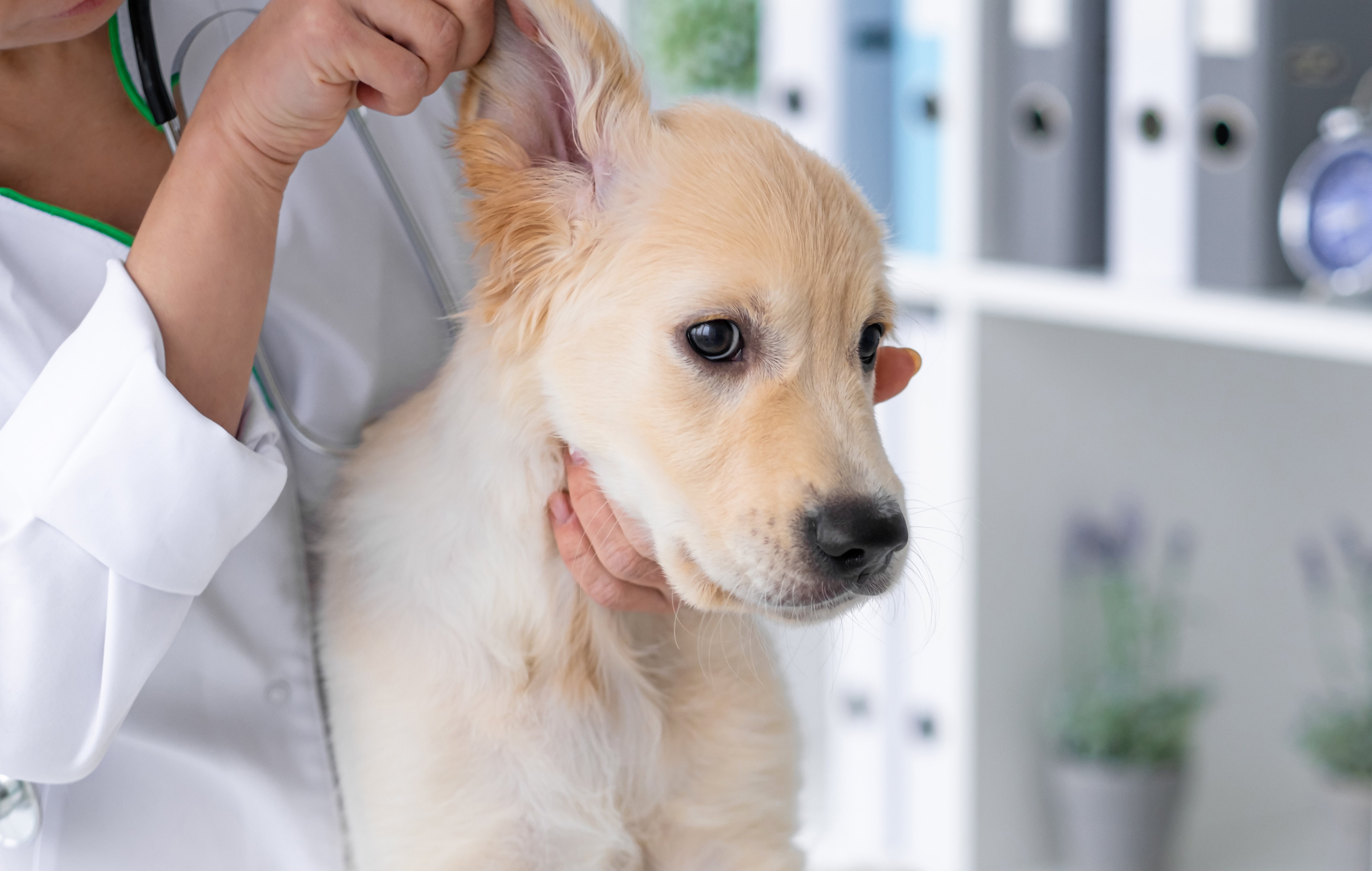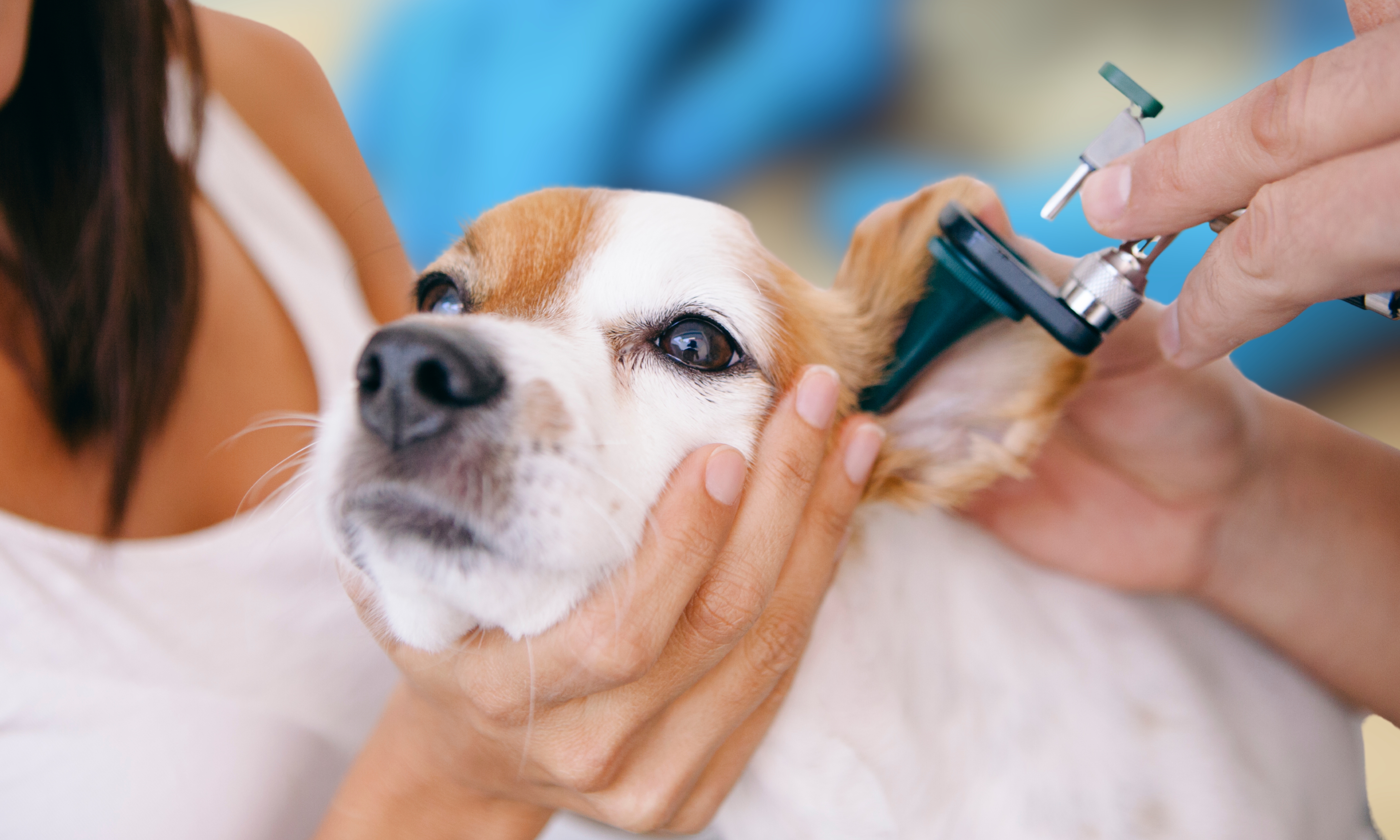
Ear cleaning
If your dog is shaking their head or your cat keeps scratching at their ears, you might be dealing with the early signs of an ear infection. Regular ear cleaning is essential to keeping your pet healthy and comfortable—and it’s one of the most important things you can do to prevent recurring problems like otitis externa.
Why ear cleaning is important
Just like brushing their teeth or grooming their coat, ear care should be part of your pet’s regular routine—especially for dogs with floppy ears, long hair, or those who love swimming.
Here’s how regular ear cleaning can make a significant difference in your pet's health and well-being:
1. Prevents Ear Infections
By diligently removing wax and debris, you create an environment that is less hospitable to harmful bacteria and yeast, which are common culprits of painful ear infections. This proactive step can save your pet from discomfort and potential health issues down the line.
2. Enhances Medication Effectiveness
Clean ears allow for better absorption of ear medications, ensuring that treatments are more effective. This means that any prescribed medications can work more efficiently, providing faster relief and promoting quicker healing for your pet.
3. Early Problem Detection
Regular ear cleaning gives you the opportunity to notice any early signs of trouble, such as redness, unusual odors, or discharge. Catching these symptoms early can lead to prompt veterinary care, preventing minor issues from escalating into serious health concerns.
When Should You Clean Your Pet’s Ears?
Not every pet needs the same cleaning routine. Your vet may recommend more frequent cleaning if your pet has allergies, chronic ear issues, or a history of infections.
When can it be important:
- Routinely, especially for breeds prone to wax buildup (like Cocker Spaniels, Poodles, or Bulldogs)
- Before applying ear drops or medication—clean ears absorb treatments better
- After an infection to help prevent recurrence
- For active pets that swim or get dirty often
- If your pet has allergies that lead to itchy, inflamed ears
Why Choose a Chlorhexidine-Based Ear Cleaner?
Chlorhexidine is a trusted ingredient in veterinary ear care because it’s a broad-spectrum antimicrobial—which means it fights off bacteria and yeast, including some of the most stubborn strains.
Key Benefits of Chlorhexidine Ear Cleaners:
Effectively eliminates harmful bacteria and fungi, including notorious strains like Staphylococcus, Pseudomonas, and Malassezia, ensuring your pet's ears remain healthy and free from infections.
Minimizes the need for antibiotics by addressing infections directly at the source, providing a targeted and efficient solution that promotes overall ear health.
Offers long-lasting protection, creating a barrier that helps prevent the recurrence of infections, giving you peace of mind and your pet lasting comfort.
Formulated properly, these ear cleaners are safe and gentle enough for regular use
When Are Chlorhexidine Ear Cleaners Most Useful?
1. Bacterial Ear Infections
If your vet sees cocci or rods under the microscope, your pet may have a bacterial infection—often caused by Pseudomonas or Staphylococcus. Chlorhexidine helps reduce the bacterial load so your pet can recover faster—sometimes without needing oral antibiotics.
2. Yeast Overgrowth (Malassezia)
Allergy-prone pets are often prone to yeast infections in the ears. A chlorhexidine-based cleaner helps control yeast and supports other antifungal treatments.
3. Recurring or Chronic Ear Issues
If your pet has repeated infections, cleaning with a chlorhexidine product can help manage symptoms, target biofilm-forming bacteria, and lower the need for long-term medications.
4. Before Applying Ear Medication
Cleaning the ears first clears away wax and debris, so medicated ear drops can reach where they’re needed most.
Which ear cleaners should I use?
Here are some vet-recommended products you can use to clean your pet’s ears safely and effectively:

Otodine: a patented ear solution with chlorhexidine and Tris-EDTA, designed to fight microorganisms.

Clorexyderm Oto: perfect for routine ear cleaning, this formula combines chlorhexidine with lactobionic acid to clean and moisturize.

Peptivet Oto (Drops & Gel): combines chlorhexidine, Tris-EDTA, and AMP2041 (a powerful antimicrobial peptide), plus Vitamin PP and Zinc PCA.

Tris-NAC: specially formulated for tough cases, Tris-NAC includes Tris-EDTA and N-acetylcysteine (NAC) to dissolve biofilms and make treatments more effective. Ideal for pets with recurrent or chronic ear problems.
Helping Fight Antibiotic Resistance Through Ear Cleaning
One of the biggest concerns in both human and veterinary medicine is the rise of antibiotic-resistant bacteria. Overusing antibiotics makes it harder to treat infections over time.
Ear cleaning helps by:
- Controlling infections early—before they become severe
- Treating topically
- Targeting biofilms that protect bacteria
- Preventing recurrence through ongoing maintenance
Contact your vet
Your pet can’t tell you when something’s wrong with their ears—but you can help prevent problems before they start. With the right ear care routine and veterinary-approved ear cleaners, you can protect your dog or cat from unnecessary pain, itching, and infections. When in doubt, always check with your vet to choose the best product and frequency for your pet’s specific needs.
